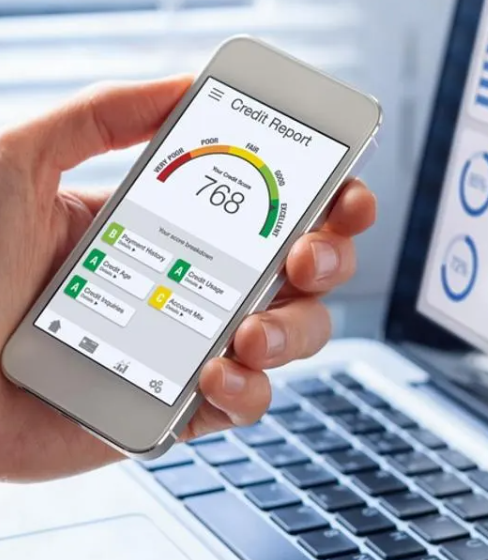As the world moves further into the digital age, credit bureaus are adapting to meet the demands of a rapidly changing economy. The traditional methods of evaluating creditworthiness—based solely on past payment history—are no longer enough in today’s fast-paced, technology-driven world. With consumers using alternative credit options and expecting real-time decisions, credit bureaus are embracing new tools like machine learning, real-time data, and predictive modeling to keep up. These innovations are reshaping how lenders assess risk and how consumers engage with financial services.
Changing Consumer Behavior in the Digital Economy
The rise of digital services has transformed how people apply for credit and manage their finances. In an era where payments are instantaneous and services are available on demand, borrowers now expect the same speed when it comes to credit approval. Whether applying for a personal loan through an app or using a buy-now-pay-later service, the demand for quick decisions is at an all-time high. To meet this need, credit bureaus are shifting from periodic updates to dynamic, real-time credit models that continuously assess risk.
Today’s consumers are also interacting with new types of financial products. Gig work, digital wallets, and rent payment platforms have created a new landscape for financial activity. These are often not captured by traditional credit models, forcing bureaus to expand their data sets and rethink how creditworthiness is defined.
How Credit Bureaus Are Adapting to Change
Traditional credit systems, designed for a slower, more predictable lending environment, are no longer sufficient. To keep up, companies like Equifax are investing heavily in cloud infrastructure and real-time data processing. This allows lenders to access up-to-date information on income, employment, and account activity, moving beyond just past financial behavior and toward predicting future credit risks.
Moreover, modern credit models incorporate not just static data but also behavioral patterns and risk signals. This shift has increased financial inclusion by offering fairer evaluations, particularly for individuals previously excluded from traditional credit assessments, such as younger consumers, gig workers, and immigrants.
The Role of AI and Machine Learning in Credit Decisions
Artificial intelligence is transforming credit decision-making. Machine learning models can now analyze not just whether someone missed a payment, but why it happened. By looking at spending patterns, income fluctuations, and other contextual factors, AI-driven systems can offer a deeper understanding of a borrower’s risk.
Unlike traditional scoring systems, AI models learn from new data over time. As they process more information, they improve their accuracy, reducing errors and adjusting to changing economic conditions, such as recessions or inflation. This continuous learning makes AI an invaluable tool in assessing creditworthiness during periods of economic volatility.
Rising Privacy and Transparency Concerns
As credit bureaus move to real-time, data-driven infrastructures, there are growing concerns about privacy and data usage. The increased reliance on digital data raises ethical questions about how consumer information is handled and who has access to it. Consumers are becoming more aware of their rights regarding data and expect transparency and control over who sees their financial information.
In response, credit bureaus are implementing opt-in systems for data sharing, allowing consumers to have more control over their credit profiles. This shift toward consent-based data sharing helps build trust, which is vital in today’s data-driven economy.
How Businesses Are Using Credit Data
Credit data is no longer just for lenders. Businesses in a variety of industries are beginning to use credit data to assess broader financial risks. For example, the rise of buy-now-pay-later (BNPL) services and subscription-based financing models has changed how recurring payments are tracked. These newer forms of credit are not always reported to traditional credit bureaus, but this is changing as bureaus develop new metrics to capture long-term payment behavior tied to digital subscriptions.
Small businesses, too, are benefiting from a new wave of credit data. Platforms like PayPal, Stripe, and Square collect valuable merchant data, which credit bureaus can use to evaluate the credit risk of small businesses—an area that was previously underserved.
Why These Changes Matter for Borrowers
These advancements in credit reporting might seem like industry shifts, but they have tangible effects on consumers. Real-time data and predictive scoring are opening doors for those with limited or unconventional credit histories. Consumers who rely on gig work or have limited traditional credit records can now be assessed more fairly based on their actual financial behavior, such as timely bill payments or consistent income from side jobs.
Moreover, consumers now have more control over their credit profiles. Digital tools make it easier to track credit scores, dispute errors, and decide who can access their information. This level of transparency and control was unthinkable just a decade ago, but it’s fast becoming the standard.
The Future of Credit Reporting
As credit bureaus continue to adapt to the digital economy, their role will be defined by how well they meet consumer expectations, regulatory demands, and the evolving needs of lenders. While credit bureaus have made significant strides in modernizing their infrastructure, they face increasing competition from fintech companies and must navigate the complexities of global data privacy regulations.
The credit bureaus that thrive in this new environment will be those that embrace innovation, adapt to changing market conditions, and, most importantly, maintain the trust of consumers. As the financial world continues to digitize, credit bureaus must continue to evolve to meet the needs of both lenders and borrowers in an increasingly connected and data-driven world.



